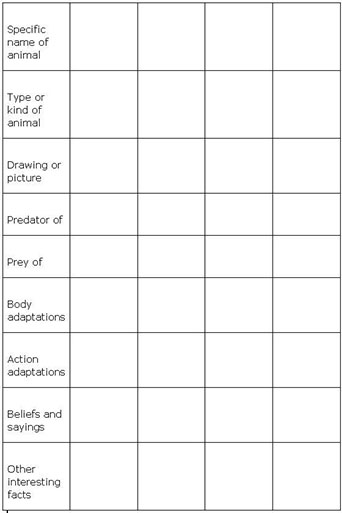3. Valuing experience and local knowledge
Sadly, much of the local knowledge of the natural world is in danger of being lost in modern times. It is seen to have little or no value. Perhaps local primary schools could take responsibility for reviving interest by researching and recording such knowledge and understanding.
Students at a teachers’ college discovered that old madala George, the man who worked as the gatekeeper, was a wonderful resource due to his extensive knowledge of the local natural world. But all his knowledge and understanding was in his head and would probably die with him. See Resource 4: Local knowledge for examples of some of the things we learned from him. Do you know anyone like this? Could they come and talk to your pupils?
We need to encourage our own pupils to become naturalists. We have already explored the value of giving pupils time to undertake detailed observations of ecosystems and different species. Case Study 3 shows how exciting lessons can be if we value our pupils’ knowledge and allow them to make decisions about their own learning. Here, the pupils were able to show their learning to others and decide what they wanted to research further. Think about lessons where you could try this.
The Key Activity uses this way of working to compile a display or book about animals in your local area. The emphasis is on organising observations of adaptation and feeding patterns.
Case Study 3: Learning from experience
A science education lecturer, Michael Oladokun, was disappointed to observe a Primary 5 lesson on birds that really didn’t work well. The student teacher followed the curriculum and textbook of the time, but the pupils seemed bored. Reflecting on the failure of the lesson to catch the pupils’ imaginations, the teacher and lecturer realised that any three-year-old preschooler would already know that birds had wings, feathers and beaks and that they usually made nests and laid eggs.
Later, Michael and the student teacher, Sade Adebayo, planned a very different lesson where they took in artefacts (such as bits of a broken swallow nest, assorted feathers, the discarded shell of a hatched chick, a dead vulture that had been hit by a car that morning near the school) and pictures of local birds. They put the items on the front bench and left groups of pupils to choose something and tell their classmates what they knew about that thing. What could they tell us about birds?
What a different lesson! We couldn’t stop them talking. They had so much to tell. They told us things we didn’t know, like: swallows mate for life, raise a few broods each season, and sometimes, on dead chicks (baby swallows) thrown out of the nest, you find strange bloodsucking tick-like things that can run very fast. Pupils went on right through lunchtime telling us all the interesting things they knew about local birds and discussing their own unanswered questions. These were recorded for answering later.
Key Activity: Researching and recording local knowledge
Here, you and your pupils plan and draw up a large table on a poster to record information that pupils find out about all kinds of local animals. It could have column headings such as:

The table is built up and added to over time. Encourage your pupils to add questions to the table. If possible, use different colours for questions and answers. Blank spaces will indicate where further research is needed. You might ask different pupils to take responsibility for finding out about particular animals, but encourage teamwork.
If you have a multigrade class, older pupils could assist younger pupils with the recording. You will need to plan regular times to allow pupils to add their findings to the table.
At the end of the term or year, the information can be transferred to a large book to be kept as a record for future reference.
(You may find the Key Resource: Using new technologies [Tip: hold Ctrl and click a link to open it in a new tab. (Hide tip)] useful to research information or to display the information).
2. Discussing animals in groups



